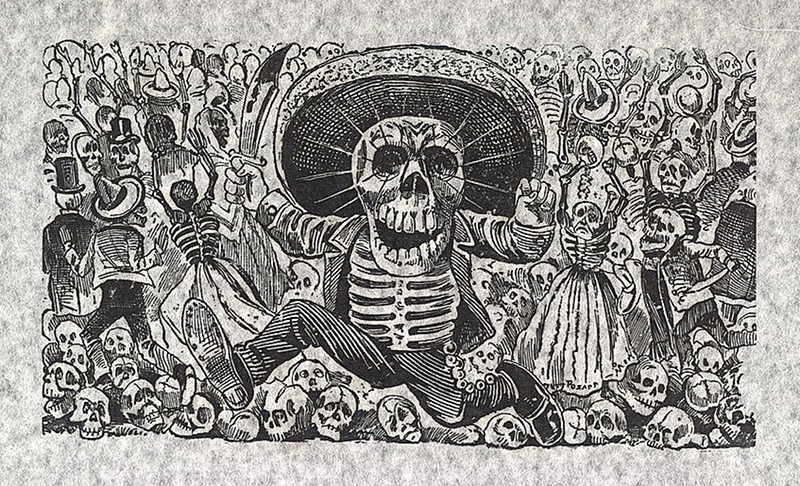The tradition is celebrated differently in different Hispanic countries. In Spain, it has been a quiet, minor religious holiday (perhaps changing with global influences.) In México it combines the Catholic tradition with indigenous celebrations. There it is a time for remembering our loved ones, cleaning the graves, making special foods, leaving offerings for the deceased. Mexicans tend to accept and even make fun of the idea of death, giving friends candy skulls with their names on them.
"Assured that the dead would be insulted by mourning or sadness, Día de los Muertos celebrates the lives of the deceased with food, drink, parties, and activities the dead enjoyed in life. Día de los Muertos recognizes death as a natural part of the human experience, a continuum with birth, childhood, and growing up to become a contributing member of the community. On Día de los Muertos, the dead are also a part of the community, awakened from their eternal sleep to share celebrations with their loved ones.
The most familiar symbol of Dia de los Muertos may be the calacas and calaveras (skeletons and skulls), which appear everywhere during the holiday: in candied sweets, as parade masks, as dolls. Calacas and calaveras are almost always portrayed as enjoying life, often in fancy clothes and entertaining situations." (http://education.nationalgeographic.com/education/media/dia-de-los-muertos/?ar_a=1)
José Guadalupe Posada, 1851-1913, was a Mexican illustrator whose drawings satirized social and political issues of his day. His work was recognized and associated with Día de los Muertos after his death, in the 1920's, and has since become famous throughout the world.

